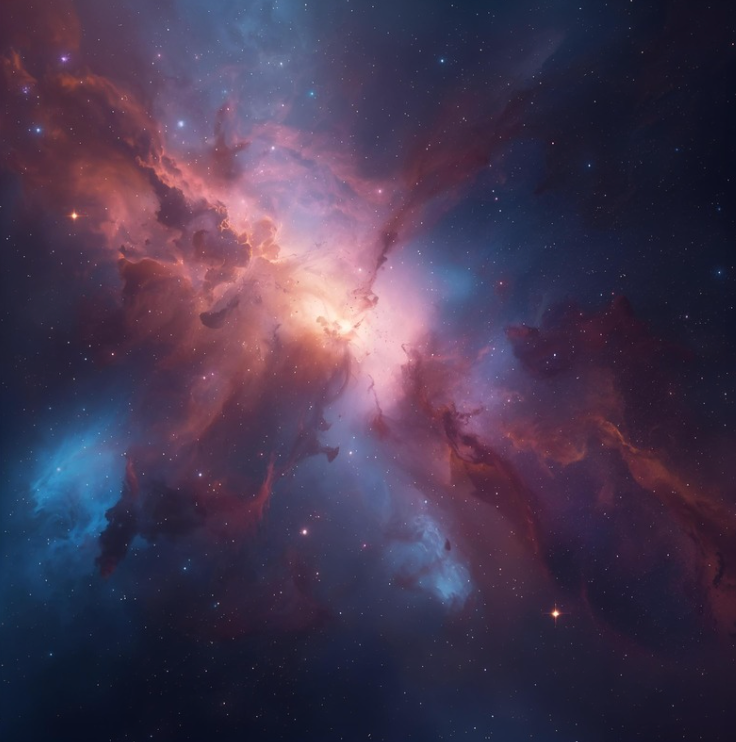When We Finally Look Up - Why Our Phone Addicted Society is Mistaking the Ordonary for the Extraordinary
- Jay Burrell
- Oct 24
- 8 min read

We live in an age of profound paradox. We carry devices in our pockets that connect us to the sum total of human knowledge, yet we've become increasingly disconnected from the most basic realities of the world around us. When people finally tear their eyes away from their glowing screens and look up at the sky, they're encountering phenomena that humans have observed for millennia—stars, planets, satellites, atmospheric effects—and treating them as though they're witnessing something unprecedented, something alien, something that demands immediate viral documentation. The recent surge in "orb" sightings and UFO reports isn't evidence of an extraterrestrial invasion. It's evidence of something far more mundane and, frankly, more concerning: we've become so absorbed in our digital lives that we've forgotten what the natural world actually looks like.
The Orbs Are Just Stars (And We've Forgotten How to See Them)
Let's address the elephant in the room—or rather, the "orb" in the sky. The so-called mysterious orbs that people are breathlessly posting about on social media are, in the vast majority of cases, simply stars. Yes, stars. Those celestial bodies that have been visible in our night sky since the dawn of humanity. The same stars that guided ancient navigators across oceans, inspired countless myths and legends, and have been the subject of astronomical study for thousands of years. But here's the thing: when you spend the majority of your waking hours staring at a screen six inches from your face, you lose your familiarity with the night sky. You forget that Venus, one of the brightest objects in our sky, can appear startlingly luminous at certain times of year. You don't recognise Jupiter or Mars. You've never bothered to learn the constellations or understand how satellites move across the sky in predictable patterns.
You don't know that stars twinkle due to atmospheric turbulence, creating an effect that can seem unusual or even "pulsating" to the untrained eye. When someone who has spent years looking down suddenly looks up, everything seems strange. Everything seems potentially alien. A bright star becomes an "orb." A satellite becomes a "craft." An airplane at a distance becomes an "unidentified flying object"—technically true, since the observer can't identify it, but hardly evidence of extraterrestrial visitation. The irony is thick: we have unprecedented access to astronomical information, star-mapping apps, and educational resources about what's actually in our sky, yet we're more confused about basic celestial phenomena than our ancestors who had none of these tools.
The AI Dilemma: You Can't Trust What You See Anymore
Compounding this problem is another technological development that makes the current situation even more complicated: artificial intelligence has become so sophisticated that distinguishing real footage from fabricated content has become nearly impossible for the average person, You cannot say with certainty that any of these viral videos showing supposed UFOs, mysterious orbs, or unexplained phenomena are genuine. Not anymore. AI-generated imagery and video have reached a level of sophistication that would have seemed like science fiction just a few years ago. Deep learning algorithms can now create photorealistic images and videos that fool even experts. They can simulate lighting, shadows, reflections, and movement with uncanny accuracy. They can generate "authentic-looking" footage of virtually anything—including UFOs, alien craft, and mysterious aerial phenomena. This creates a perfect storm of confusion. We have a population that's unfamiliar with natural phenomena because they're constantly looking at their phones, and simultaneously, we have technology that can create completely convincing fake videos of extraordinary events.
The result? A feedback loop of misinformation, where people who don't know what stars look like see AI-generated videos of "orbs" and assume they're documenting the same phenomenon they're seeing in real life. The technology that was supposed to connect us to truth and information has instead created an environment where truth becomes increasingly difficult to discern. Every video is suspect. Every image could be fabricated. Every "witness account" could be someone who saw a convincing deepfake and convinced themselves they saw the same thing in person. This isn't to say that all UFO footage is fake—some of it may be genuine documentation of misidentified conventional objects or phenomena. But the point is that we've lost the ability to reliably distinguish between what's real and what's manufactured. And in that environment of uncertainty, people's imaginations run wild, filling in the gaps with the most extraordinary explanations rather than the most likely ones.
Space Junk Is Just Space Junk

Now let's talk about the recent discovery of debris on an Australian beach, which some people have breathlessly speculated might be evidence of alien technology. Let's be absolutely clear: it's space junk. That's it. Nothing more, nothing less. Since the beginning of the space age in 1957, humanity has launched thousands of rockets, satellites, and spacecraft into orbit. Many of these objects eventually fall back to Earth. Sometimes they burn up completely in the atmosphere. Sometimes pieces survive reentry and make it to the ground. This isn't new. This isn't mysterious.
This is the predictable consequence of decades of space exploration and satellite deployment. The debris found on that Australian beach is almost certainly a piece of a rocket body, satellite component, or other human-made space hardware that survived reentry. Space agencies and experts can often identify these objects based on their construction, materials, and characteristics. There's nothing alien about it. The suggestion that this might be extraterrestrial technology reveals a fundamental misunderstanding of what advanced alien technology would likely look like—if it existed and if it were visiting Earth. Let's think about this logically for a moment.
Why Aliens Wouldn't Build What We Found
If an alien civilisation had developed the technology to traverse the vast distances between stars—a feat that would require energy manipulation and propulsion systems far beyond our current understanding of physics—do we really think they would build spacecraft that look like corroded metal cylinders that fall apart in our atmosphere? Consider the level of technological sophistication required for interstellar travel. We're talking about a civilisation that would have solved problems we can barely conceptualise: faster-than-light travel or generation ships that could sustain life for thousands of years, energy sources that could power such journeys, navigation systems that could plot courses across light-years of space, and shielding that could protect against cosmic radiation and micrometeorite impacts.
A civilisation with that level of technological advancement would build craft that are far more sophisticated than anything we could mistake for "space junk." Their materials would likely be beyond our current understanding.
Their construction would probably not resemble anything in our engineering paradigm. If pieces of their technology fell to Earth, they would likely exhibit properties that would be immediately and obviously anomalous—unusual atomic structures, impossible material compositions, or characteristics that defy our understanding of physics. What we found on that beach exhibits none of these qualities. It looks exactly like what it is: a piece of human-made space hardware that has been through the trauma of reentry and exposure to seawater. It's corroded, damaged, and entirely consistent with the kind of debris that regularly falls from orbit. The fact that some people immediately jumped to "alien technology" as an explanation says more about our collective desire for the extraordinary than it does about the actual nature of the object.
The Deeper Problem: We've Lost Touch with Reality
All of these phenomena—the misidentification of stars as "orbs," the inability to distinguish real videos from AI-generated fakes, the assumption that space junk must be alien technology—point to a deeper, more troubling problem: we've become so immersed in our digital lives that we've lost touch with physical reality. Our phones have become our primary interface with the world. We experience life through screens, filters, and algorithms. We see curated versions of reality, edited and enhanced and optimised for engagement. We spend more time in virtual spaces than in physical ones. We interact more with digital representations of people than with actual human beings in our presence.
Is it any wonder, then, that when we finally look up from our devices, the real world seems strange and unfamiliar? Is it surprising that we don't recognise natural phenomena that our ancestors would have found completely ordinary? Should we be shocked that we can't tell the difference between real footage and AI-generated content when we've spent years consuming media that's been filtered, edited, and manipulated? We've created a society where people are more familiar with the virtual than the real, more comfortable with the mediated than the immediate, more trusting of what they see on a screen than what they see with their own eyes. And now we're reaping the consequences of that disconnection.

The Solution: Reconnect with the Physical World
The answer to this problem isn't to abandon technology—that ship has sailed, and besides, technology itself isn't the enemy. The answer is to consciously and deliberately reconnect with the physical world around us. Look up at the night sky regularly. Learn the constellations. Download a star-mapping app and actually use it to identify what you're seeing. Understand the difference between a star, a planet, a satellite, and an aeroplane. Familiarise yourself with atmospheric phenomena like sundogs, light pillars, and noctilucent clouds. Know what the International Space Station looks like as it passes overhead.
Develop critical thinking skills about the media you consume. Question viral videos. Understand that AI can now generate convincing fake footage.
Don't immediately assume that extraordinary claims are true just because they come with a video attached. Seek out expert analysis. Look for mundane explanations before jumping to extraordinary ones. Recognise that space junk is a real and growing problem, and that debris from human space activities regularly falls back to Earth. Understand that this is a consequence of our own activities, not evidence of alien visitation. Most importantly, spend less time looking at your phone and more time looking at the world around you. Not so you can document it for social media, but so you can actually experience it. So you can rebuild your familiarity with natural phenomena. So you can reestablish your connection with physical reality.
Conclusion
The recent surge in UFO sightings, "orb" videos, and speculation about alien technology isn't evidence that we're being visited by extraterrestrials. It's evidence that we've become so disconnected from the natural world that we no longer recognise ordinary phenomena when we see them. The orbs in the sky are stars—the same stars that have been there all along, patiently waiting for us to notice them again. The videos flooding social media are either misidentifications of conventional objects or AI-generated fakes designed to generate engagement. The debris on the Australian beach is space junk—the detritus of our own space activities, nothing more.
If aliens were visiting Earth, they would build technology far more sophisticated than the corroded metal cylinders we're finding on beaches. They would leave evidence that couldn't be mistaken for human-made objects. They would exhibit capabilities that would be immediately and obviously beyond our current technological level. What we're witnessing instead is a society that has spent so long looking down at screens that it's forgotten how to look up at the sky. We've become strangers to our own planet, unfamiliar with the natural phenomena that surround us, unable to distinguish the real from the artificial, and eager to believe in extraordinary explanations for ordinary events. The solution isn't to stop looking up, it's to start looking up more often, and to relearn what we're actually seeing when we do. The universe is extraordinary enough without inventing mysteries where none exist. The real wonder isn't in imaginary alien visitors—it's in the actual cosmos that's been above us all along, waiting patiently for us to put down our phones and remember how to see.




Comments